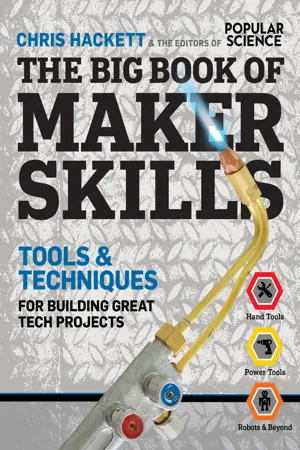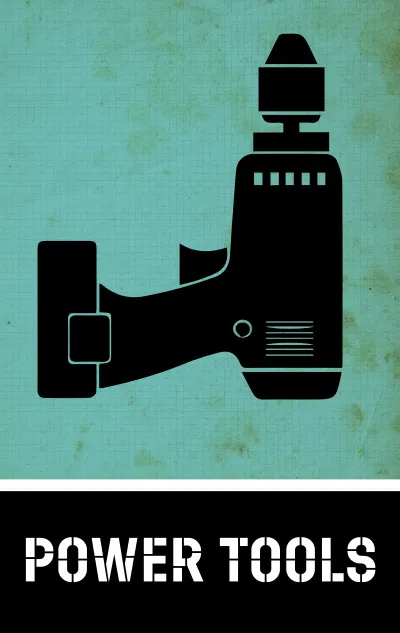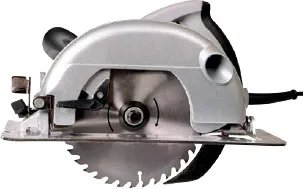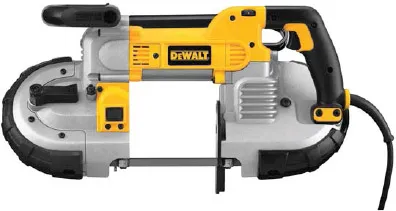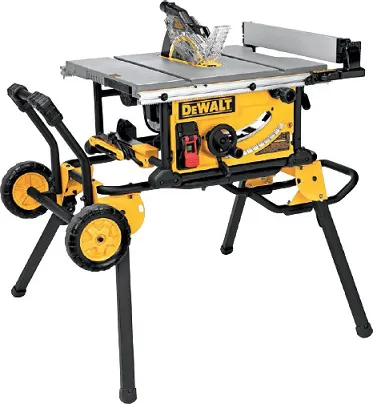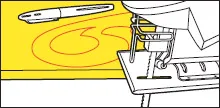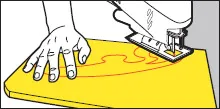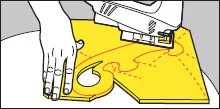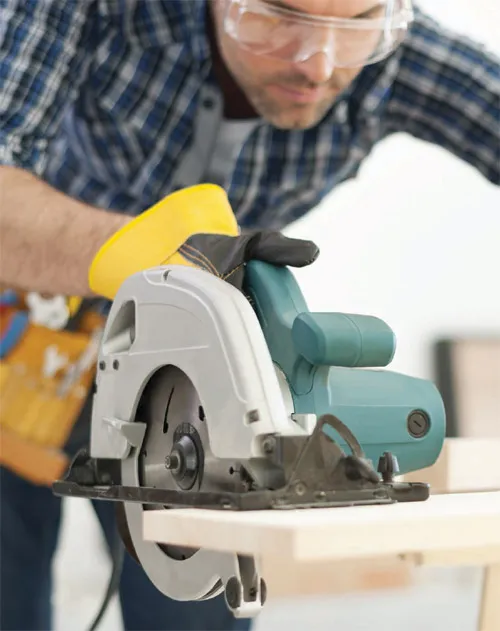![]()
Where the power of handsaws is limited by the power of your hands, these saws get their juice from longer-lasting sources like batteries or a wall socket. Letting them do the hard work can save you a lot of pushing and pulling.
BANDSAW Consists of a strip of toothed metal passing over two wheels, which feed the material under the blade. What it lacks in portability, it makes up for in utility, cutting curves and straight lines through materials thick and thin.
CIRCULAR SAW Essentially a motor, saw blade, handle, and base plate with a guide. Versatile cutting tool, as long as you’re cutting in a straight line. Choosing the right blade for the job is essential.
RECIPROCATING SAW Most often used in construction, remodeling, and demolition. Cuts with a blade that moves back and forth. Good for cutting numerous materials in hard-to-reach places.
JIGSAW Something of a tiny reciprocating saw. Can be used to cut straight lines, but really intended to cut curves. The thinner and narrower the blade, the tighter the curve.
PORTABLE BANDSAW Works well for smaller projects, cutting through anything from pipes to rebar, from plastic to wood. Some come in variable speeds for greater control and cut accuracy.
BENCH SAW Also called a table saw. It’s basically a circular saw that protrudes up through a table or bench. It comes with adjustable blade height and angle, making it great for long cuts.
Excellent for custom parts and stencils, horrible for sticking to a straight line, the power jigsaw dates from the 1940s. Jigsaws ride light on top of the work, anchored only by the oscillating blur of the blade and you.
STEP 1 Plan your cut. Curves, stencils, oversize novelty glasses—transfer your design to the work surface with a writing utensil. Pro tip: Three teeth should be contacting the work at all times. Make thin materials like sheet metal thicker by firmly attaching them to plywood backing—spray adhesive will work well.
STEP 2 Don’t start the saw under load. Hit the material with the blade moving. To start an internal cut, drill holes slightly larger than the blade. Make the holes inside where the cut will go, and all evidence of them will disappear.
STEP 3 Continue working, keeping close to your drawn edge. Until your skills increase, don’t try for perfection on your first cut. Remember, you can always cut more—less, not so much.
STEP 4 Break complicated cuts into smaller ones. Some tight turns are impossible—saw blades only cut in one direction.
STEP 5 Keep it tight. Jigsaws work best when all of their energy goes into the teeth hitting the material. Any looseness wastes energy and breaks blades. Push firmly, clamping as much as possible.
Simple and casually dangerous, the circular saw is the angle grinder of wood. Use the correct blade to leverage its might.
Most electric tools have a manual ancestor, and the circular saw’s predecessor is the water-powered sawmill. While a lot of things are worth learning on your own, the ones that can cost you fingers or limbs are sometimes best read about.
STRAIGHT CUTS ONLY The saw blade is the only circular thing about this saw. Try to cut a curve and get a free lesson in the power of friction.
ADJUST THE SHOE The saw rides on the “shoe”—the plate at the saw’s bottom. Adjust the shoe angle for beveled cuts. For cleaner cuts, set the blade depth as close as possible to the thickness of the material.
EVERY SAW IS A SNOWFLAKE Every saw (even within brands) has different lines and guides on the shoe to indicate where you’re actually cutting. Do some test cuts when using an unfamiliar saw. Pro tip: Measure the distance between the blade edge and the side of the shoe. Write this on the saw with permanent marker or a label maker. Take some nail polish and draw a red arrow to mark the side of the blade. If it’s a borrowed saw, the owner will thank you.
USE A GUIDE If you’re using a circular saw, there’s a good chance straight lumber and clamps are nearby. Position the lumber, clamp it down, and just ride the shoe against the guide.
The portable bandsaw is primarily used on job sites for tasks like trimming rebar or conduit during construction. Imagine a hacksaw and an arm that never tires—just a little too powerful, teetering on the edge of power tool and lawsuit. To use:
SECURE THE WORK Portable bandsaws pack some serious torque. If the thing you’re cutting can move, lock it down in a vise or clamp it to something solid.
POSITION THE SAW AND YOU The bumper (flat sheet metal plate where the back side of the blade goes into the saw) is where all the real action happens. The work is jammed against the bumper, the only way out being through the blade. Make sure the bumper is in a position to do its job; otherwise, the saw will jump violently when...
